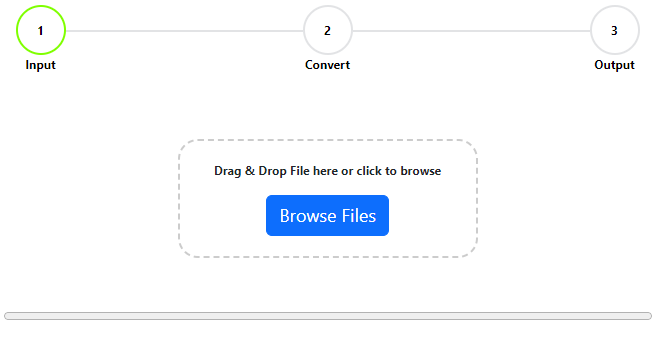ShapeFiles Explained
What is the purpose of a shapefile?
A shapefile is a type of file used to store geographical data. It is a common data format for storing spatial data in geographic information systems (GIS) software.
Shapefiles can store data about the shapes of geographical features, such as points, lines, and polygons, as well as their associated attributes, such as metadata, descriptions, and other information. They are often used to store data about the boundaries of geographic regions, such as countries, provinces, or census tracts, as well as data about the features within those regions, such as roads, rivers, and buildings. Because shapefiles are a widely used and standardized format, they can be easily shared and used in many different GIS applications.
What files make up a shapefile?
A shapefile typically contains a collection of files with the same name but different file extensions. The most common files included in a shapefile are:
.shp: This is the main file that contains the spatial data for the shapefile. It stores the geometry for the shapefile, such as the coordinates for the points, lines, and polygons.
.shx: This file stores the index for the spatial data in the .shp file. It is used to access spatial data more efficiently.
.dbf: This file stores the attribute data for the shapefile. Attribute data is information about the features in the shapefile, such as their names, descriptions, or other characteristics.
.prj: This file stores the coordinate system and projection information for the shapefile. This is used to ensure that the spatial data is displayed correctly on a map.
In addition to these files, a shapefile may also include others, such as .sbn and .sbx files that store the spatial index for the shapefile, and .fbn and .fbx files that store the spatial index for the attributes in the .dbf file.
What can I do with a shapefile?
There are many things you can do with a shapefile, depending on the type of data it contains and the tools you have available. Some common uses for shapefiles include:
Visualizing geographical data: You can use a shapefile to create maps and other visualizations of the data it contains. For example, you could use a shapefile of country boundaries to create a map of the world, or a shapefile of road networks to create a map of a city.
Analyzing spatial relationships: Shapefiles can be used to analyze the spatial relationships between different geographical features. For example, you could use a shapefile of rivers and a shapefile of cities to determine which cities are located near rivers, or a shapefile of earthquake locations and a shapefile of fault lines to identify potential relationships between earthquakes and faults.
Creating custom GIS applications: Shapefiles can be used as the data source for custom GIS applications that you create. For example, you could use a shapefile of land use data to create an application that helps users visualize and analyze land use patterns in a region.
Is A ShapeFile Raster Or Vector?
A shapefile is a vector data format, which means that it stores data as a set of geometric shapes, such as points, lines, and polygons this is in contrast to raster data formats, which store data as a grid of pixels, with each pixel representing a specific value or range of values. Vector data is often used to store data about the shapes and locations of geographical features, such as the boundaries of countries, the outlines of lakes, or the locations of buildings. This makes it well-suited for many GIS applications, such as creating maps and analyzing spatial relationships. Raster data, on the other hand, is often used to store data that varies continuously across a geographic region, such as satellite imagery or elevation data.
It’s important to note that individual shapefiles only store one type of vector geometry. For example, you can not store points and lines in the same shape! different geometries need to be stored in separate shapefiles.
Can Excel open a shapefile?
Excel is not a GIS software and does not have built-in support for opening and working with shapefiles. However, there are a few ways you can use Excel to work with shapefile data.
One option is to use a tool or plugin that allows Excel to import shapefile data. Some GIS software, such as QGIS or ArcGIS, have plugins or extensions that can export shapefile data to Excel. Alternatively, you can use a third-party tool or script to convert a shapefile to a format that Excel can read, such as a CSV or XLS file. This will allow you to manipulate attributes attached to the geometries contained within the shapefile but not the actual geometries.
If you are just interested in the attribute data and not the spatial data (geometries within the shapefile ) you can open the .dbf file of the shapefile and view this in Excel.
Frequently asked questions about shapefiles:
What is a shapefile?
- A shapefile is a popular geospatial vector data format for geographic information system (GIS) software. It is used for storing the location, shape, and attributes of geographic features, such as points, lines, and polygons. It’s developed and regulated by Esri as an open specification for data interoperability among Esri and other GIS software products.
How do I open and edit a shapefile?
- Shapefiles can be opened and edited using various GIS software programs like Esri’s ArcGIS, QGIS (a free and open-source alternative), and others. These programs allow users to view, edit, and analyze the spatial and attribute data stored in shapefiles.
What are the components of a shapefile?
- A shapefile is a combination of several files. The main files include:
.shp– stores the geometry of the feature..shx– an index file that facilitates searching and accessing the features..dbf– a dBASE table that stores attribute data and object IDs.
Other optional files can include.prj(projection format),.sbnand.sbx(spatial index), and others for different purposes.
How do I convert a shapefile to other formats (like KML, GeoJSON)?
- Converting shapefiles can be done using GIS software like QGIS or ArcGIS, as well as through online conversion tools. The process generally involves loading the shapefile into the program and then exporting it to the desired format, like KML or GeoJSON, using the software’s export or save as function.
Can shapefiles store attribute data?
- Yes, shapefiles can store attribute data. This data is stored in the
.dbffile. Each row in the.dbffile corresponds to a feature in the.shpfile, and each column represents an attribute of the feature, such as name, type, height, etc.
What are the limitations of shapefiles?
- Shapefiles have several limitations:
- Limited attribute data: The
.dbffile uses an older data format, which restricts the types and lengths of attribute data. - No support for topological features: Shapefiles do not inherently support topological relationships between features.
- Size limitation: Each
.shpfile can only support up to 2 GB of spatial data.
- Limited attribute data: The
How do I create a shapefile from scratch?
- Creating a shapefile from scratch involves using GIS software. In software like QGIS, you can create a new shapefile layer and define its geometry type (point, line, or polygon) and the structure of the attribute table. You can then manually add features and their attributes.
Are there any free tools to work with shapefiles?
- Yes, QGIS is one of the most popular free and open-source GIS software that can work with shapefiles. GDAL (Geospatial Data Abstraction Library) is another toolset used for converting and managing geospatial data, including shapefiles.
How do shapefiles handle projection and coordinate systems?
- Shapefiles handle spatial reference information through a separate file with a
.prjextension. This file contains information about the coordinate system and projection used in the shapefile. If a shapefile does not have a.prjfile, it may be considered to have an undefined spatial reference, and users may need to assign the correct projection manually.
What are the common uses of shapefiles in GIS?
- Shapefiles are widely used in GIS for a variety of purposes, including mapping, spatial analysis, and managing geographic data in various fields such as urban planning, environmental management, transportation, and more.
How do I troubleshoot common errors with shapefiles?
- Common issues with shapefiles include missing files (like
.shxor.dbf), corrupted data, and compatibility problems. Troubleshooting typically involves ensuring all necessary files are present, checking the integrity of the files, and using GIS software’s repair tools. It’s also important to ensure that the shapefile is compatible with the version of the software being used.





